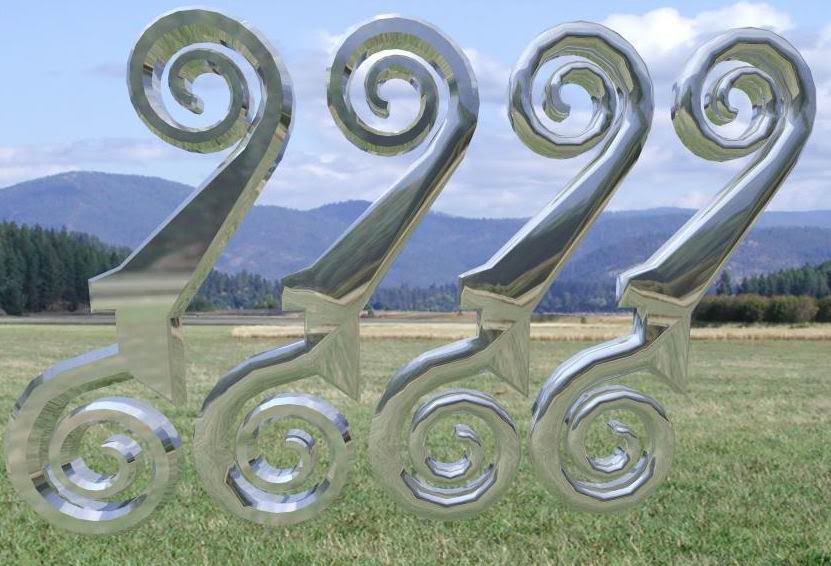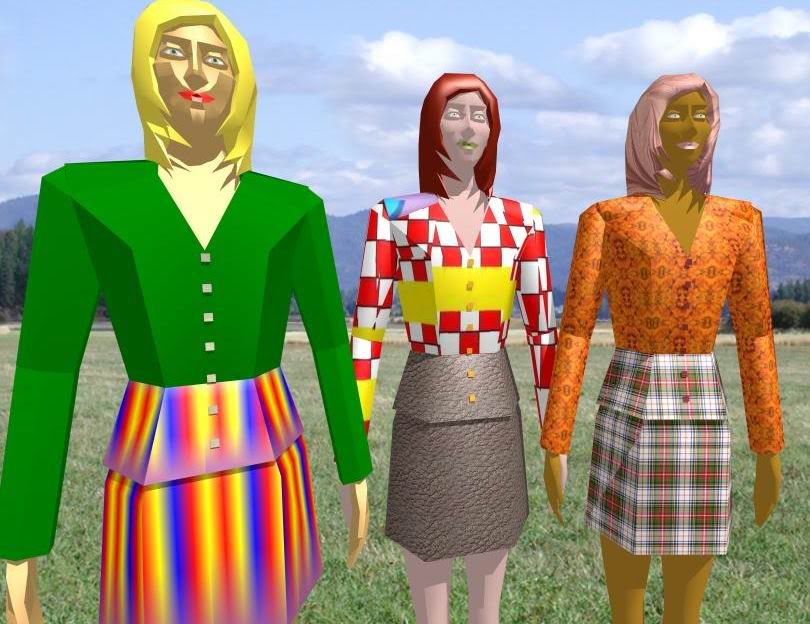Results 1 to 8 of 8
-
12-14-2004, 01:06 PM #1
These are a few of my favorite curly things
If anyone is interested these four things were imported, using respectively, from left to right smoothing angles of 15, 35,55 and 85 deg.
 Your privacy is important to us, your personal details will handled discreetly, and will not be shared with anyone except the CIA, FSB, MI6 or similar, then they will be placed on a USB stick and left on a bus.
Your privacy is important to us, your personal details will handled discreetly, and will not be shared with anyone except the CIA, FSB, MI6 or similar, then they will be placed on a USB stick and left on a bus.
-
12-16-2004, 10:12 AM #2
The polygon sisters
Ok nobody picked up on this, I just wanted to show the function on the smoothing angle thing, and the effect on objects, as you can see, with this particular thing increasing the angle has a noticable effect on the smoothness, and remember the default angle is 35 deg. what I wanted to ask was if increasing the angle has any effect on the speed of the rendering or raytrace. Does anyone have any expertice in these matters. Here's another one.

Smoothing angles left to right; 35, 85,150 deg.
Polygons left to right ; 1795, 2120, 2208 (facets)
These girls are relatively low poly objects, and yet but specifying a good smoothing angle they are easily improved. Hope this useful to someone.
both the images are raytraces, it is worth noting that the improvement, of the final view(with the smoothness switched on ) is even more dramatic, than the raytrace.Last edited by ARCHIJEF2000; 12-16-2004 at 10:16 AM.
Your privacy is important to us, your personal details will handled discreetly, and will not be shared with anyone except the CIA, FSB, MI6 or similar, then they will be placed on a USB stick and left on a bus.
-
12-16-2004, 10:49 AM #3
Jeff,
Where are you setting the smoothing angle? I don't understand what you are referring to. Are you talking about Sketch Up?Dennis Gavin CR, CKBR
Gavin Design-Build
Media, PA.
610-353-8890
X5
-
12-16-2004, 11:10 AM #4
Dennis,
this all takes place in CA, when you import an DWG/DXF using the "Create symbol wizard" the surface smoothing angle will appear, the default value is set at 35 deg, this you may change before moving to the next step. I guess its easy to miss, but can be a very useful tool.
A.J. twentydoubleoYour privacy is important to us, your personal details will handled discreetly, and will not be shared with anyone except the CIA, FSB, MI6 or similar, then they will be placed on a USB stick and left on a bus.
-
12-16-2004, 12:18 PM #5
Yep, I missed it. I even went intot eh import symbol wizrd before I posted my question. So much for reading glasses. Seems I need a smack in the back of the head with someone pointing to the screen and saying "right there dummy".
Thanks. I'll have to play with it.Dennis Gavin CR, CKBR
Gavin Design-Build
Media, PA.
610-353-8890
X5
-
12-17-2004, 08:20 AM #6
The smoothing angle will effect whether or not two adjacent surfaces will be treated as if they were one continuous curved surface. If the two surfaces are within the specified angle, Chief will mark them as adjacent and connected. All other surfaces will be treated like they are completely independent from each other.
Two surfaces that are considered adjacent and connected, will not have a line drawn between them in any of our vector based 3D views. Also, when the "smooth faces" option is turned on in render camera views, we use a technique called "normal averaging" to make the surfaces appear like they are curved instead of flat. By default, the smooth faces option is turned off in render previews and turned on in final views.
The normal averaging might add a little bit of extra computation at render time but this should have very little effect on speed overall. Mostly, the smooting angle will have a dramatic effect on the visual appearance and the optimal value is largely dependent on the data you have imported. Experimenting with different values and then rendering is the best way to determine what you want it set to.Dermot Dempsey
Principal Software Engineer
Chief Architect, Inc.
http://www.ChiefArchitect.com
http://www.HomeDesignerSoftware.com
-
12-17-2004, 09:35 AM #7
 Registered User Promoted
Registered User Promoted
- Join Date
- Aug 2003
- Location
- Mountain View, CA
- Posts
- 2,970
Interesting... I'll have to check out smoothing factor next time I deal with a symbol.
Great examples, but don't quit your day job to become a fashion designer anytime soon!
Christina
-
12-17-2004, 01:59 PM #8
 Registered User Promoted
Registered User Promoted
- Join Date
- Mar 2004
- Posts
- 97
Jeff,
Ya got a phone number for the one on the left?... She's Hot! (lol)
(Sorry, but somebody had to)
Nice Job, and thanks for the hints. I've been messing around with the same things, and have run into increased rendering times and out-of-mem issues due to the number of faces generated in sketch-up type programs. I assume this should allow us to reduce the faces by like 80% and still feather the edges, No?www.van-con.com





 Reply With Quote
Reply With Quote


